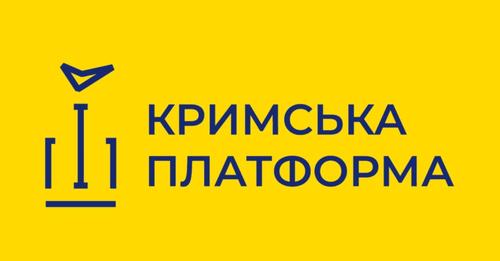Did you know that popular e-voting has been practised in Ukraine at least since 2015? It has been indeed – for various purposes and at different levels of governance. While electronic voting can be either offline via electronic voting devices or online via the Internet (i-voting), in Ukraine the former has been used by elected officials and the latter by the public.
In a broader sense, e-voting has been utilised for choosing policies. At the local level, it has been applied for selecting participatory budgeting community development projects – initiatives for improving a community put forward, deliberated and decided upon by its residents, which local authorities are bound to implement. According to a recent 2019 study by independent researchers Dmytro Khutkyy and Kristina Avramchenko, in the first cycle (from 2015) already as many as 123 communities (over 91 percent of all surveyed) have introduced either mixed electronic-paper or exclusively electronic voting for choosing development projects. At the national level, e-voting has been carried out for choosing priorities for open government reforms. As the Secretariat of the Cabinet of Ministers of Ukraine reported, from 2016 the general public has been voting online for Open Government Partnership initiative undertakings. Despite being non-binding, the results of these popular votes de facto shaped the list of commitments later adopted and implemented by the executive government.
In a narrower sense, e-voting was employed for electing representatives –that is, for e-elections. Similarly, Ukrainian citizens have engaged in e-elections of both community and countrywide scope. At the municipal level, since 2018 Kyiv City Council has ruled that Kyivians elect civil society organisations for the participatory budgeting commission electronically. At the state level, according to respective official announcements, since 2015 citizens of Ukraine have been e-electing representatives for public councils at the National Anti-Corruption Bureau of Ukraine and some other agencies. All these e-elections were binding.
However, in Ukraine e-voting has not yet been applied for electing either members of local councils or members of the national parliament.
Visions and designs
Nevertheless, the newly elected politicians anticipate the upcoming online elections in Ukraine. In particular, such ambitious plans were voiced by Mykhailo Fedorov – the Vice Prime Minister and Minister of Digital Transformation. In a 2019 interview with the Liga outlet, he announced that online voting would be piloted at the next local elections and full-scale online voting at the next presidential elections. This innovation is positioned as part of a larger “state in smartphone” concept.
Concerns and solutions
Despite the high-spirited visions by optimistic advocates of digitising the voting process, its sceptics have voiced a number of critical remarks. However, each major critique can be addressed by a respective rejoinder.
First, ensuring a widespread and trustworthy mechanism for verifying the identities of voters participating in online elections is a significant challenge. The precise number of certified digital signatures in Ukraine is unknown, but it should exceed 1 million, the number of public officials obliged to submit e-asset declarations. In addition to certified digital signatures, there are qualified digital signatures on microchipped national ID-cards. Yet few Ukrainian citizens possess them. As the State Migrations Service of Ukraine has reported, by the end of January 2020 it had issued over 4.3 million of national ID-cards. This constitutes slightly over 12 percent of the 35.5 million eligible voters in Ukraine, according to data of the Central Election Committee of Ukraine. Besides, as the survey by Factum Group Ukraine demonstrated, in late 2019 as many as 71 percent of residents of Ukraine aged 15 years and older used the Internet. This constitutes the identification reliability versus inclusiveness dilemma. It can be resolved by allowing multiple alternative identification channels: via digital signature on a national ID-card, a digital signature issued by a state agency or a bank, or through offline identification at an administrative service centre and subsequent online voting there.
Apparently, critics contend that e-voting raises cybersecurity concerns. Ukraine’s government has been that target of multiple cyberattacks from Russia. For instance, as reported by Radio Svoboda, during the 2014 presidential elections the Central Election Committee web-site suffered from DDoS-attacks, was hacked, and its web-site displayed incorrect election outcomes. To counter this, Ukraine can adopt Estonia’s approach to preventing cyberthreats, such as a highly-secure ID-card. E-voting can also be tested on smaller scale, such as in by-elections to local councils or primaries for parliamentary and presidential elections, while digitalisation can start from a lower stakes, less controversial, and more approachable stage such as, for instance, during vote counting.
Furthermore, there is the dilemma of ensuring a direct and secret ballot and striving to conduct a remote i-voting. There are risks of buying votes and pressurising voters. While this also occurs during analogue elections, the absence of supervision in remote voting amplifies these risks. While with remote e-voting the state cannot guarantee the right for a direct and secret ballot, it can mitigate the risks by granting a voter the possibility of unlimited changes of a ballot until the end of election day and by introducing the backup option of offline voting after the online one. This would require a profound legal, financial, and technical action.
Moreover, according to a Razumkov Centre 2019 survey, there is a strong distrust towards many political institutions in Ukraine. To ensure the legitimacy of e-voting, persuading the public that the e-elections were performed properly is essential. Yet the call for enhanced transparency contradicts the legal requirement of securing the confidentiality of a secret ballot. One possible solution is to publish an open code of e-voting software. However, this does not prevent individual abuse. Another possible, though elaborate, solution is developing an e-voting system using blockchain technology. Its advantages include the cryptographic protection of information distributed among a network of peers. In Ukraine, there was an unfinished experiment of applying blockchain technology for e-voting within the E-Vox project. Furthermore, it is possible to apply the Prêt à Voter technology, which enables an automatic instant calculation of election results while allowing any voter to check an individual vote while also protecting the secrecy of his or her vote. In 2017, this high-tech solution was tested by the NGO “Electronic Democracy” for e-elections at a university. Both blockchain and the Prêt à Voter technologies ensure that no single party is able to control, delete, or modify all data and thereby distort voting results.
Advantages and perspectives
Even if it is technically possible to expand e-voting to e-elections for public offices, why embark on such an undertaking?
A wider application of e-voting, including e-elections, assumes several practical benefits. The commonly posited arguments are saving constituents’ time (due to voting remotely instead of going to a ballot station in person) and saving public funds (due to reducing paper-related expenses). It is worth noting that while exclusively digital voting would result in lower public expenditure, operating a dual system of digital voting alongside analogue, in-person voting will actually increase public expenses and election committees’ workload.
Despite these concerns, given its convenience, e-voting is important as a potential inclusion enabler. Specifically, this might benefit Ukrainian citizens travelling and working abroad. Although, given the Estonian experience, as analysed by e-voting scholars Kristjan Vassil, Mihkel Solvak, Priit Vinkel, Alexander Trechsel, and Michael Alvarez, such inclusion effects will necessarily require time. The Estonian experience shows that this might require several election cycles.
E-voting may potentially have a positive influence on political processes. By providing instant and reliable results, and by publishing open code, e-voting may possibly increase electoral transparency. The publication of voting results by each ballot station online, combined with enhanced cyber-security, may reduce the risk of voter abuse. Considered together, this can strengthen electoral legitimacy and increase public trust towards elections.
Beyond using e-voting for electing public officials, the technology can be applied for routine policy making. Thus, (non-)binding e-voting for local and national policies, e-referenda, and liquid democracy designs (optional delegating or casting a vote) can increase the quality of good governance and make it more democratic.
In the eurointegration dimension, the introduction of e-elections of public officials should contribute to further EU-Ukraine integration. In particular, the EU-Ukraine Association Agenda contains the short-term priority of the improvement and harmonisation of all electoral legislation. Therefore, more transparent elections should enhance this strand.
Dmytro Khutkyy – Policy Leader Fellow at the School of Transnational Governance, European University Institute, Florence, Italy (1)
Annotations
The views and opinions expressed are those of the author and do not necessarily represent the views and opinions of the European University Institute (EUI) or the School of Transnational Governance






 UA
UA FR
FR DE
DE
